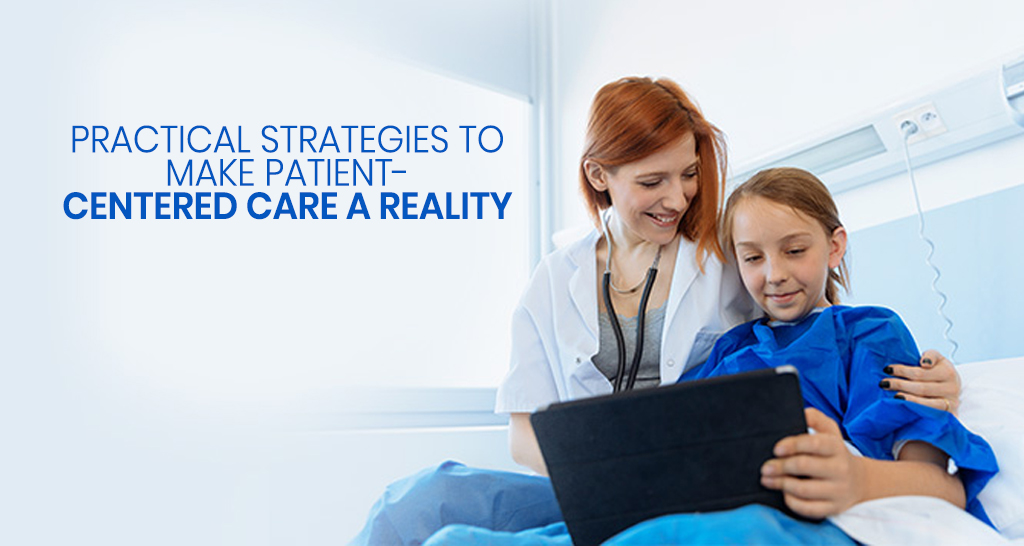You want to provide the best possible care to your patients, but you know that’s not always easy. There are time constraints, financial constraints, and institutional policies to contend with. But there is one thing that can make a big difference in the quality of care you provide: your approach to care is patient-centered.
To be more specific, you focus on each patient’s needs and preferences and provide care that is tailored to the patient’s unique situation and goals. It can lead to better health outcomes, increased patient satisfaction, and reduced costs.
That said, in this blog post, we’ll share practical strategies for making patient-centered care a reality. These strategies are easy to implement and can make a big difference in the quality of care you provide to your patients.
So, continue reading to the end!
Listen Actively
Listening actively is a vital aspect of patient-centered care. When you, as a healthcare professional, engage in active listening, you go beyond hearing words. You focus on understanding the patient’s concerns, emotions, and needs. This approach fosters a strong patient-doctor relationship, as it shows empathy and respect.
Here are some tips for listening actively:
- Make eye contact, put away your phone and other distractions, and listen without interrupting.
- Focus on what your patient is saying and try to see things from their perspective.
- Don’t make assumptions about what your patient is going to say or how they are feeling.
- Ask questions when needed. This depicts your interest in what your patient has to say and helps ensure that you understand them correctly.
- It is important to listen to your patients without judgment. This means accepting their feelings and experiences, even if you don’t agree with them.
Remember, active listening is an essential skill for providing patient-centered care. It helps build trust and rapport with patients and ensures that you provide the care they need and want.
Navigating the Regulatory Landscape
As a healthcare professional, keeping up with ever-changing rules and standards is vital. But you might wonder, how does this connect to patient-centered care?
Well, your commitment to staying informed about guidelines forms the foundation for patient-centered care. It ensures that care is delivered safely, ethically, and by the rules. Moreover, being up-to-date with rules and regulations helps build trust. It reduces the chances of legal issues, fines, and harm to your reputation.
Still unsure about navigating the rule maze? You can visit this site for helpful resources and guidance. Additionally, it’s a wise move to consider bringing a healthcare lawyer on board. They specialize in ensuring compliance with regulations and reducing the risk of legal issues. This approach allows healthcare professionals to concentrate on delivering top-quality care to their patients and worry less about legal matters.
Effective Communication
When you, as a healthcare professional, communicate effectively, it benefits everyone involved. Patients can better understand their conditions, treatment options, and what to expect. They feel more involved in their care, which is a core aspect of patient-centered care.
However, effective communication is about more than just talking. It’s also about asking questions and actively listening to patients’ concerns. It’s a two-way street. This open and honest communication builds trust and empowers patients to participate actively in their healthcare journey.
Use Technology To Enhance Care
Integrating technology into healthcare practices offers numerous benefits for both patients and providers. For example, telehealth and electronic health records (EHRs) make it easier for patients to access care and for healthcare professionals to manage patient information. This convenience enhances the patient experience, particularly for those with limited mobility or living in remote areas.
Moreover, technology enables more efficient communication between healthcare providers, leading to better care coordination. Real-time information exchange allows for a more holistic view of a patient’s health and enables quicker decision-making.
Create Patient Advisory Boards
A patient advisory board (PAB) is a group of patients and caregivers who meet regularly with healthcare providers and administrators to provide input on healthcare policies and practices.
PABs can be valuable in helping healthcare providers provide more patient-centered care. PAB members can provide insights into the patient experience in policy, identify improvement areas, and help develop and implement new policies and practices.
Moreover, it promotes transparency and trust and empowers patients, making them active partners in their healthcare journey.
Conclusion
Patient-centered care is not just a buzzword; it’s a commitment to putting patients at the center of the healthcare experience. These strategies mentioned above, when put into practice, empower patients to be active participants in their healthcare journey. It leads to better health outcomes, increased patient satisfaction, and reduced costs.
So, why wait to embrace patient-centered care? The time to act is now.

